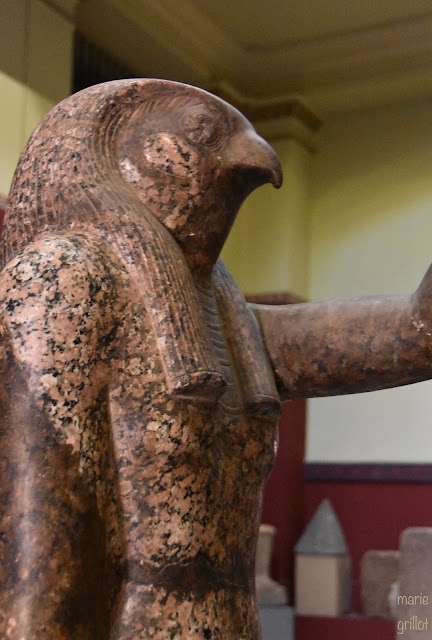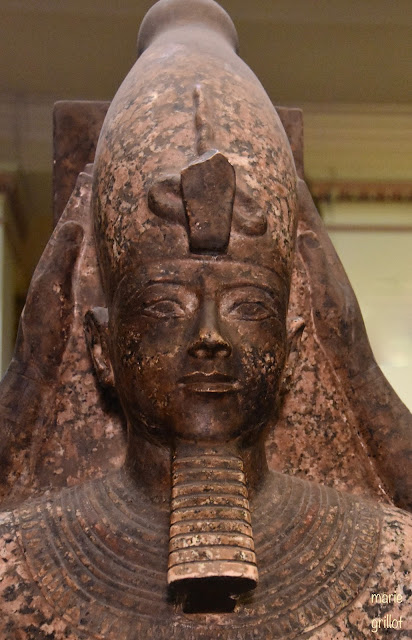The Cairo Museum houses countless treasures, yet among them, the statue of King Ramses III stands as a crowning jewel. This extraordinary work of art encapsulates the artistic brilliance, spiritual depth, and cultural sophistication of ancient Egypt. Standing proud and flanked by the gods Horus and Seth, Ramses III embodies the intricate balance of power and divine order that defined his era.
A Monument of Artistic Mastery
Carved from rare grizzled granite, the statue of Ramses III exemplifies the technical expertise of ancient Egyptian artisans. The stone, notoriously difficult to sculpt, has been transformed into a lifelike and intricate depiction of the pharaoh and his divine companions. Ramses III’s serene expression and commanding posture exude authority and tranquility, while the dynamic poses of Horus and Seth emphasize the interplay of order and chaos.

This masterpiece reflects not just the artistic talent of its creators but also their ability to convey profound symbolism through visual storytelling. Every detail, from the fine carvings on the pharaoh’s headdress to the intricate hieroglyphs adorning the base, reveals a narrative steeped in religious and political significance.
The Symbolism of Horus and Seth
Flanking the pharaoh are the gods Horus and Seth, whose contrasting characteristics represent a fundamental aspect of Egyptian cosmology. Horus, the falcon-headed deity of kingship and order, signifies stability, protection, and divine legitimacy. Seth, known for his chaotic and unpredictable nature, symbolizes the adversities and challenges that rulers must overcome to maintain balance.

By positioning these two deities alongside Ramses III, the statue underscores the pharaoh’s role as a mediator who maintains Ma’at—the universal balance essential to Egyptian civilization. This dynamic relationship between the forces of harmony and chaos was central to the political and spiritual life of ancient Egypt, and Ramses III is immortalized as a leader who mastered this balance.

Ramses III: The Last Great Pharaoh
Reigning from 1186 to 1155 BCE, Ramses III is often regarded as the last great pharaoh of Egypt’s New Kingdom. His rule was characterized by both monumental achievements and significant challenges. One of his greatest triumphs was the successful defense of Egypt against the Sea Peoples, a coalition of maritime invaders who threatened the region. His leadership during these conflicts preserved the sovereignty of Egypt during a period of widespread instability.

However, Ramses III’s reign was not without turmoil. Economic difficulties, labor strikes, and the infamous “Harem Conspiracy”—an attempt to assassinate the king—cast shadows over his legacy. Despite these challenges, his contributions to Egypt’s military and cultural resilience have cemented his status as a pivotal figure in the nation’s history.
The Statue’s Cultural Significance
This statue serves as more than just a portrait of a pharaoh; it is a lens through which we can understand the values and beliefs of ancient Egyptian society. The detailed craftsmanship speaks to the high regard for artistry and the divine nature of kingship. The presence of Horus and Seth reveals the Egyptians’ nuanced understanding of governance, where power was not merely imposed but balanced with spiritual responsibility.
The statue also reflects the interplay of religion and politics in ancient Egypt. As a divine intermediary, the pharaoh was both a temporal and spiritual leader, responsible for maintaining harmony in the cosmos and society. This dual role is eloquently captured in the symbolism and grandeur of the statue.
A Timeless Legacy
Today, the statue of Ramses III stands as a centerpiece of the Cairo Museum, drawing admiration from historians, archaeologists, and visitors worldwide. It continues to inspire awe and curiosity, offering a tangible connection to a civilization that masterfully blended art, religion, and statecraft.
As one gazes upon this remarkable work, it becomes clear that the legacy of Ramses III transcends his time. His story, immortalized in granite, invites us to reflect on the enduring pursuit of balance and order—a pursuit as relevant today as it was in ancient Egypt.


